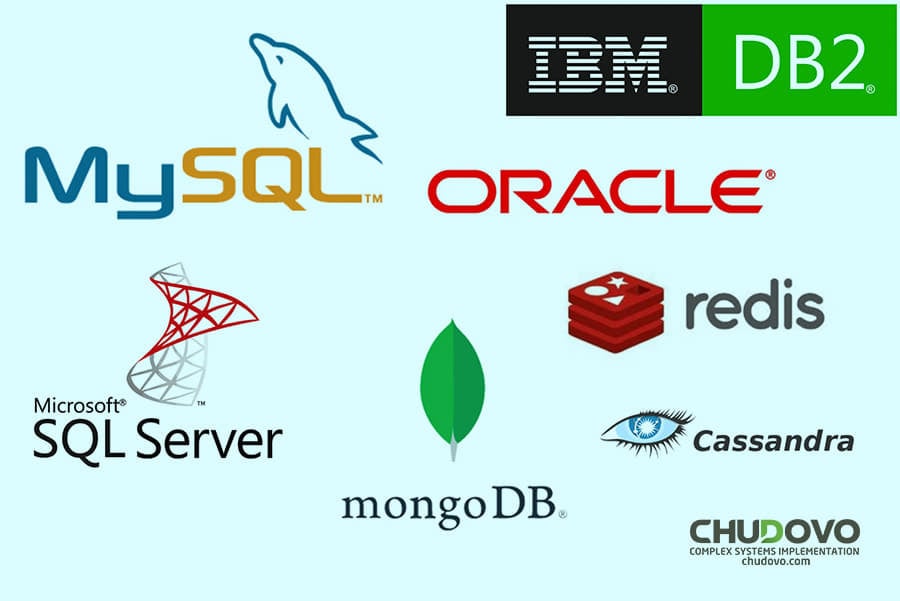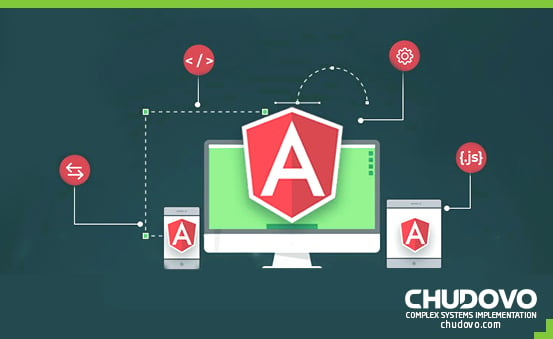The Ultimate Guide to the Best Databases for Web Applications
In today’s world, there are over a million web databases storing all sorts of information, ranging from government files to consumer order logs. Databases form an essential part of modern web applications because they determine how we manage, update, and retrieve information that we’ve stored relating to users and activities on web applications.
Selecting a web application database will therefore have a significant impact on the experience of users of these applications, which could be either positive or negative. In this article, we define what databases are, the best databases for web applications, and how to choose the best one out of the ton.
Table of Content

What are Databases For Web Applications?
A database, ordinarily, is an organized collection of structured or unstructured data that makes it easy to access, manage, and update said data. A database can simply be defined as a place where data is stored. A database for web applications performs the same function as a regular database: making it easy for data inserted and stored on web applications to be accessed, organized, and managed.
A database eases the management and administration process for web applications undergoing daily content changes. For example, databases are required to update postings for web applications that post user-generated content and for e-commerce web applications that store product details and customer data.
Choosing the right web application database is, therefore, extremely important for the web application and the user experience. If you choose the wrong one, it might cause a failure or drop in the goodwill of your product.
Features of Web application databases
Databases have many features, but there are five integral features that a database must possess. These include:
Security
It is not only the foremost but also the most crucial feature that a database must possess. When incorporating security features in a database, they must include strong passwords, HTTPS/SSL encryptions, and password-protected login pages. A database that is not secured is prone to malicious attacks, which could lead to theft or loss of vital data.
A database should therefore be secured in such a way that only authorized and certified users can have access to it. This can be done by installing several authentication methods. Data should be encrypted, tracked, and logged accordingly, and the number of users granted access to data should also be limited.
Redundancy and Backup of Data
Duplication or replication of data, that is, data replication into multiple servers or locations, illustrates data redundancy. This is done to circumvent or reduce the effect of an unprecedented data loss. It is generally done to ensure that essential data can never truly be lost and can be accessed when needed.
Data backups involve file copies that are created and stored at regular intervals. In the case of any attack or damage from digital, physical, or natural channels, which could eventually lead to data loss, backups are used to ensure that data is stored and protected and can still be accessed when required.
Scalability and Performance
A database must be scalable, that is, be expandable when the need arises, without adverse effects on its general performance as expansion increases. Glitches and other performance faults in the database will negatively affect the running of the web application and the firm, ultimately.
Scalability allows more data to be inputted and stored as the firm or organization for which the database is intended expands. Accommodating vast numbers of users and data should therefore be an integral feature of every database. It is also crucial that the database be able to maintain peak performance while handling these large amounts of traffic.
Simple Querying and Reporting
Data queries involve retrieving specific data based on specific requests, data types, or custom queries, and reporting provides this data in a way that is easy and simple for users to understand. A sound database system should be able to handle these requests efficiently by having multiple querying and reporting tools, such as SQL.
SQL stands for Structured Query Language. It is a programming language that can interact with the database. It allows users to write queries that retrieve information, update and delete information on the database. Examples of SQL databases are MySQL, PostgreSQL, and Oracle.
End users, most especially those that aren’t IT oriented, should be able to seamlessly run queries on the database to provide reports that are comprehensive and relevant. There must therefore be a variety, flexibility, and simple usability of reporting tools in the database.
Data Integration
The ability of a database to connect with other web applications or software is known as data integration. Data integration allows for frictionless interactions, exchange, and transfer of data, without needing to replicate data into multiple systems. This allows for an improved user experience and data accuracy, as well as decision-making and business intelligence operations.

Pros and Cons of Web Databases
Some of the advantages of using web databases for web applications include:
- Data Integrity: This involves being able to make predefined rules and enforce them in terms of how data is stored in the web application.
- Organization and comprehensiveness of results obtained from the firm’s activities.
- Maximal minimization of redundancy of data.
- Information requirements of MIS (Management Information System) users can be met using the database.
- Consistency of operations is increased, while errors during operation are reduced.
- Databases provide independence from program applications and improve data integrity.
- Databases are effective for complex queries; that is, users have improved access to data through the use of host and query languages, such as SQL.
- Data security is enhanced.
- Costs of input, storage, and retrieval of data are reduced.
- New application programs can be developed.
- Databases provide an opportunity for easier expansion of the web application with new features and values.
- It provides standardization.
- The storage of vast amounts of data is made possible.
- Databases, such as relational databases, are the perfect option for web applications that require multi-row transactions, such as an accounting system or systems that monitor inventory.
Some disadvantages of using web databases include:
- Unauthorized and malicious entities can gain external access to the firm’s operations through the database.
- Inappropriate manipulation and use of data resources among authorized personnel are possible.
- Significant costs are involved in setting up a database for web applications.
- Long-time requirements, as well as complexity and difficulty, are involved in designing a database system.
- Databases are only efficiently utilized when used by large organizations, that is, small organizations might not get the best of it.
- All application programs are affected when the database is damaged.
- Both the programmers and users require training to be able to effectively set up and use a database.

List of Web Databases for Web Applications in 2023
Based on how businesses, organizations, and companies have migrated to the use of technology and web development at this time, the demand for databases is on the rise. Here is a list comprising web databases that can be used to manage and store data in 2023:
1.MySQL
This is well known for its simplicity, ease of use, stability, and security. It is pretty famous for its open-source solutions, and it is widely used for smaller-scale projects and data storage.
MySQL can be used across content management systems, commerce platforms, web developments, etc. It also has a large and active community of active users, thereby, this version of SQL is continuously updated and bug-free.
2. PostgreSQL
PostgreSQL is an open-source relational database management system (RDBMS) highly compatible with many applications and tools. It is used in different application software, regardless of the scale of the project. Be it small-scale projects to large enterprise management systems, PostgreSQL works for it all.
It is notable for features such as data integrity and ACID compliance, concurrency and performance, and geospatial and JSON support. Developers in need of robust and customizable database solutions use PostgreSQL.
3. Cassandra
Cassandra is a NoSQL database system designed and developed for large-scale and highly available data. This includes social media platforms, the Internet of Things (IoT), real-time analytics, etc.
Cassandra allows data replication, indexing, and transactions. And it is lauded for its ability to manage high-write loads and its highly available architecture.
4. SQLite
This is a database used to manage small-scale projects. SQLite is a lightweight relational database management system (RDBMS) that offers users ease while operating and using it. It also has features like SQL support because it is a subset of SQL, it requires low maintenance, and it has cross-platform compatibility.
SQLite is not a standalone database. It is embedded in library format in applications for mobile phones and computers. Its API is small, and even beginners can easily use it.
5. Oracle Database
Oracle database is widely known for its vast user base across various technological industries. This relational database management system has features that include cloud capabilities, scalability and availability, development tools and ecosystem, data integration, advanced analytics, security, high performance, and a multi-model database.
These projected features have made analyzing and managing large and complex data easy. Oracle supports various data types, including structured, unstructured, graph, and more.
6. Microsoft SQL Server
Microsoft SQL Server was developed by Microsoft as a commercial database software package. It is equipped with tools for enabling efficient data storage, allowing retrieval of data, and management of saved data. It is known for integrating with other Microsoft products and is generally used in business and enterprise software applications.
This relational database management system (RDBMS) offers smooth transaction support, making it an excellent fit for applications that require strict data consistency.
7. Neo4j
Neo4j is fast, scalable, simple, and easy to use. Neo4j is a native graph database that stores, retrieves, and manages data using graph structures.
The use of graph representation of storage makes it easy to present the relationship between data. It features the characteristics of supporting a wide range of programming languages.
8. Redis
Redis, also called a ‘data structure server,’ has an in-memory data storage structure. It is commonly used in a wide range of applications, and its peculiar features attract developers searching for in-memory data storage.
Aside from its speed and scalability, it can function on-premise, in the cloud or as a hybrid deployment while it supports various data structures.
9. Elasticsearch
Elasticsearch is built on the open-source Java library Lucene. It is an open-source full-text search engine.
Elasticsearch can store and index data in JSON format. It has multi-tenant capabilities and a REST API. It is known for its horizontal scalability via automatic sharing and REST API.
10. Firebase
This Google product, Firebase, is a popular NoSQL database. It has an ecosystem of building applications on mobile phones and systems, which works and functions properly across devices.
It is a good choice for developing or building gaming, chatting and trading app. It bears the features of Crashlytics, performance monitoring, cloud messaging, hosting, authentication, and a real-time database.
11. MongoDB
One of the best web applications to use when it comes to the category of NoSQL systems is MongoDB. It is easy to learn and use, with several features covering horizontal scaling, indexing and aggregation, flexibility, full-text search and the like.
MongoDB manages document data efficiently with API applications and software. Developers leverage MongoDB to design multiple databases and collect documents with varying fields and data structures.
12. MariaDB
MariaDB is an extension of MySQL created by the same developers. It has a limitation to the kinds of data it stores as it offers column means of storage. It is easy to work with, even with large-scale data.
It also bears similar functionality to MySQL with additional features and improvements. It has cross-platform support, which enables it to work and function in various applications and software environments.
13. Azure SQL Database
Made available by Microsoft, the Azure SQL database is a cloud-based relational database, and with it, users can deploy, manage, and scale SQL database in the cloud. It is an extension of the functionality of the Microsoft SQL server, and it allows developers to focus on application software development. Chudovo also provides services in the Azure Data Engineering field.
14. SAP HANA Cloud
This is an in-memory cloud-based commonly used in industries. Its cloud feature designed for advanced analytics and processing capabilities makes it stand out along other platforms for scaling and analyzing large-scale volumes and amounts of data. It also has integration with SAP solutions, multi-cloud and hybrid deployment.
15. IBM DB2
IBM DB2, developed by IBM, is a commercial relational database management system widely used in business and enterprise-level applications, such as banking, finance, healthcare, logistics, and e-commerce. It has a stronghold of security, including firewalls, data encryption, and advanced access control. It manages and analyzes large amounts of complex data.
16. OrientDB
OrientDB is an open-source NoSQL database management system. It is written in Java and performs multi-model functions. It includes using models such as graphs, documents, keys, values, and objects.
It is easy to use and easily accessible because of its user-friendly interface. It is built to handle both structured and unstructured data efficiently, and so is not limited to users.
17. DynamoDB
DynamoDB is a limitless database storage as it integrates closely with other Amazon Web Services (AWS) such as Lambda, CloudFront, and others. This fully managed NoSQL database service offers high performance and availability with seamless scalability. DynamoDB performs the administrative functions of enabling users also by operating and scaling available database clusters. Its security model does not approve unauthorized access.
18. Firebird SQL
This is an open-source database that allows the source code to be available for modification, adjustments, and extension by the community. It ranks as one of the best databases for web applications. It is database system that allows and supports multiple platforms, including Linux and Windows.

Tips for Choosing the Right Database for Web Applications
So many options, and so little time, but what’s the best for your project? How do you choose a database that’ll check all the required boxes? Below, we outline three helpful tips for selecting the right database for web applications:
Consider your database needs
Before asking too many questions about the most popular web databases, the most important point to think about is the amount and type of data that you intend to store. There’s hardly a database that handles every type and amount of data easily. If you have heavy data, you shouldn’t choose the database for lightweight data because of cost savings.
An example of how to choose the web database based on type and amount can be if the data you’re looking to store is a large amount of structured data. With that type and amount, you should be looking at databases like PostgreSQL or MySQL. These databases are great for handling tabular data.

Certified engineers
Convenient rates
Fast start
Profitable conditions
Agreement with
EU company
English and German
speaking engineers
Database scalability is key
In addition to the current data type and amount, consider the future status of your data, and if it will grow to a much larger amount in future. If you foresee that your data might grow, you should consider a web database that can scale and handle a growing number of data elements over time.
It is pertinent that you select a database that can scale without jeopardizing performance. Some factors to consider in database scalability include the following:
- Replication: Some databases allow you to replicate information in them
- Sharding: Some databases permit you to distribute your data more evenly
- Horizontal scaling: Other databases are scalable horizontally by adding nodes and servers to the database if there’s a sudden increase in
Don’t always go for the cheapest
The cost of acquiring the database solution is another factor to consider when choosing a database. Some databases require licensing fees, and it can be more or less depending on the peculiarities of your project.
Some people would prefer a cloud-based SQL, and that’s great. The prices for cloud-based solutions are different. And while some are free to use and open source, you may have maintenance costs to factor into your cost estimation.
Choose one that integrates well with other tech
A database isn’t the only technology you’ll use. Hence, when deciding which database is best, you should consider how well it integrates with other technology.
For example, databases for web applications would need to have superb integration with the web development framework used. Some databases integrate better with certain frameworks than others, so it’s vital to check which of them it is.
The more documentation and support, the better
It might be the more affordable option in terms of price, but is it the best in terms of documentation and support? Documentation can either help your project or draw it back severely.
For instance, if there’s an issue that a simple tutorial could have solved, having documentation that includes tutorials or step-by-step documents would help you tackle that problem quickly. But if there’s insufficient documentation and worldwide support from other users, then you’re on your own and would most likely waste time trying to find a solution to an avoidable problem.
Conclusion
Having an excellent web application database is extremely important and is a deciding factor in how the product turns out. It needs to be secure and scalable while integrating fully with other technology involved in the development process.
From the list of databases above, it’s easy to see that there are many choices. And by following the tips for choosing the best database, you’ll avoid making beginner mistakes and make an informed choice.
Frequently Asked Questions (FAQs)
What is a database for a web application?
A database for web applications is an organized collection of structured or unstructured data that makes it easy for clients and users to easily access, manage, and update said data.
What is the most used database for web application development?
MySQL is one of the most popular databases for web development. It’s free, open-source, and easy to use. Many companies, agencies, and businesses have adopted MySQL as their database.
What are the features of web database applications?
The features of web database applications are security, data backup, scalability, technology integration, and simple querying and reporting.
If you need highly qualified web developers at the right price for your project, contact us now!




